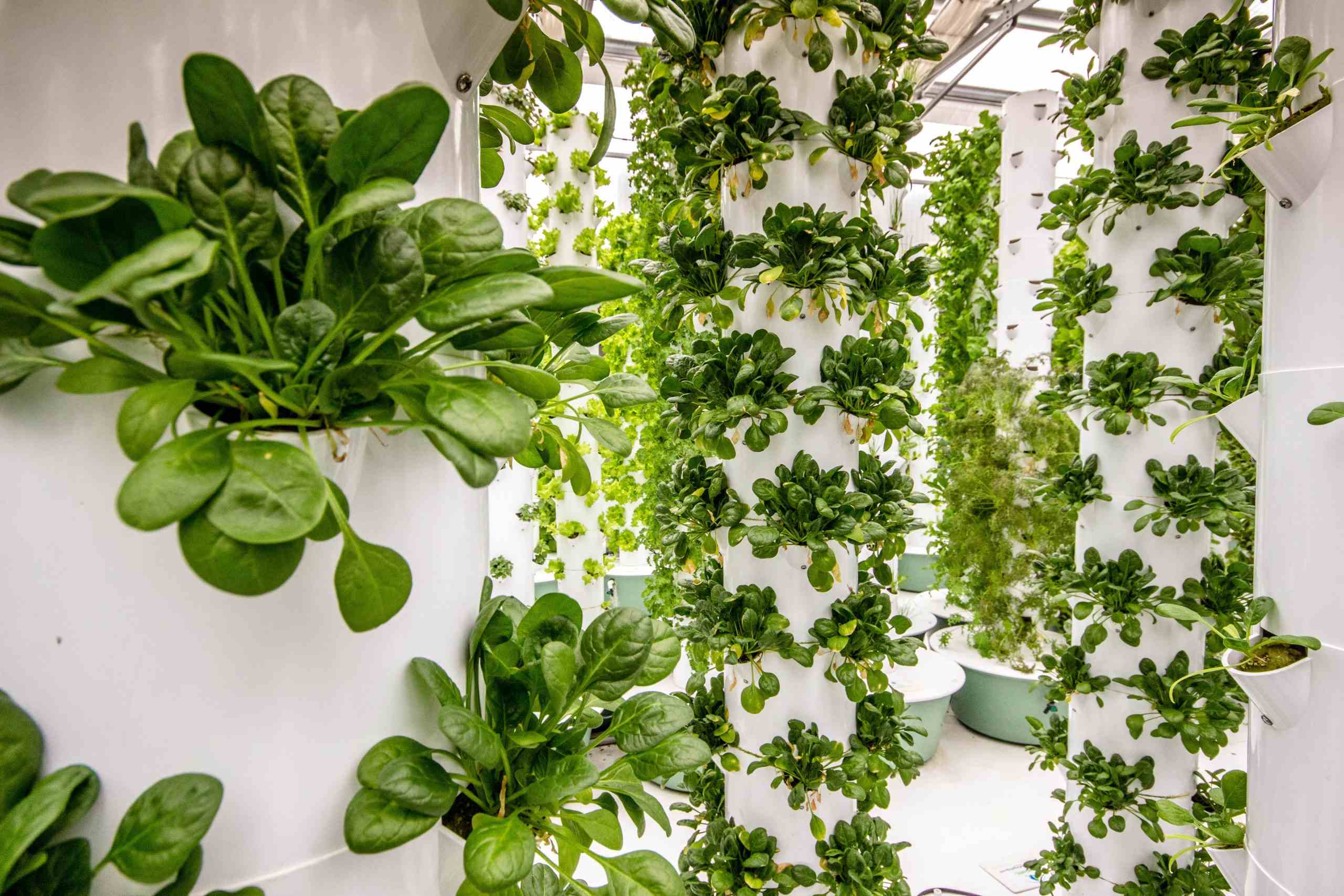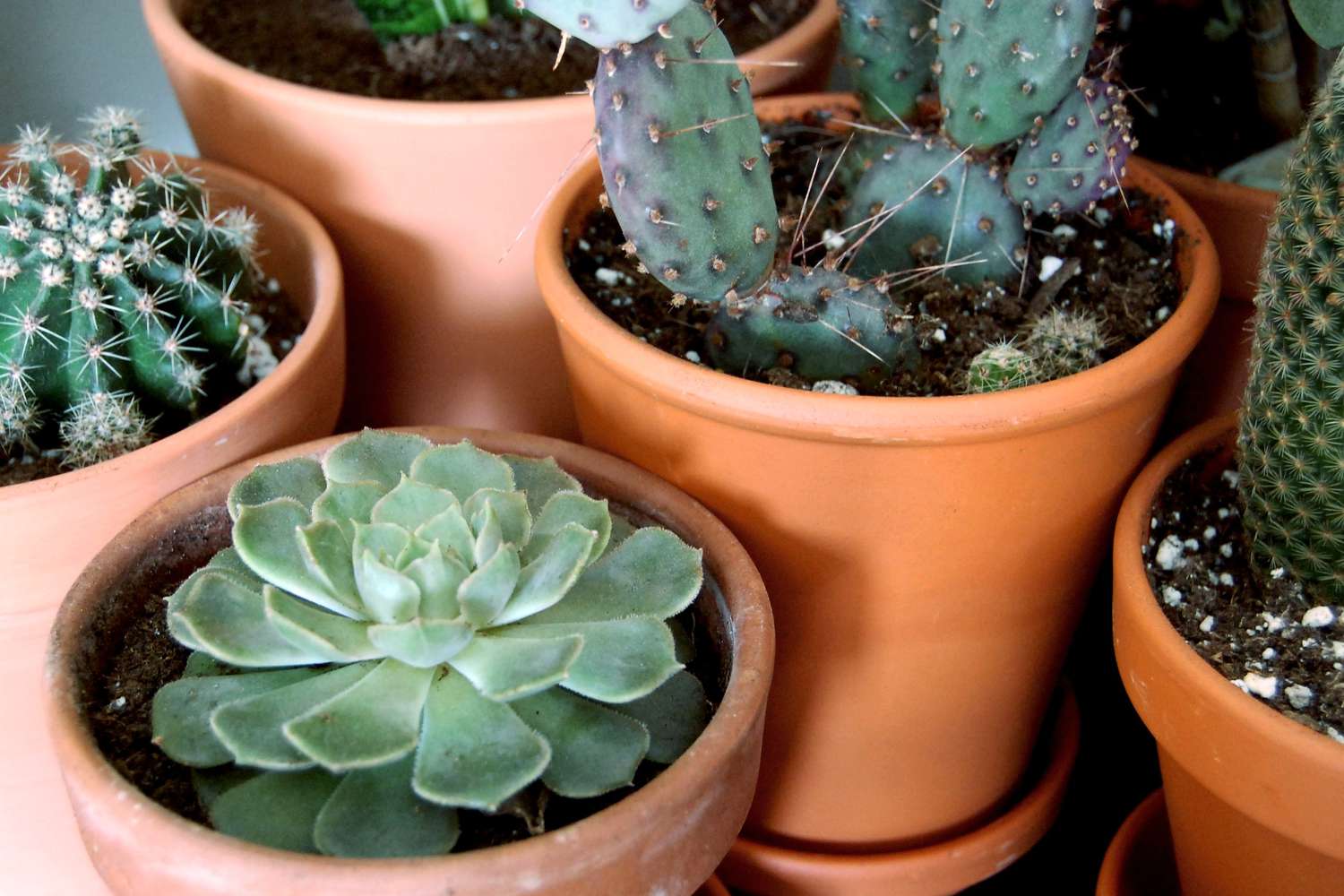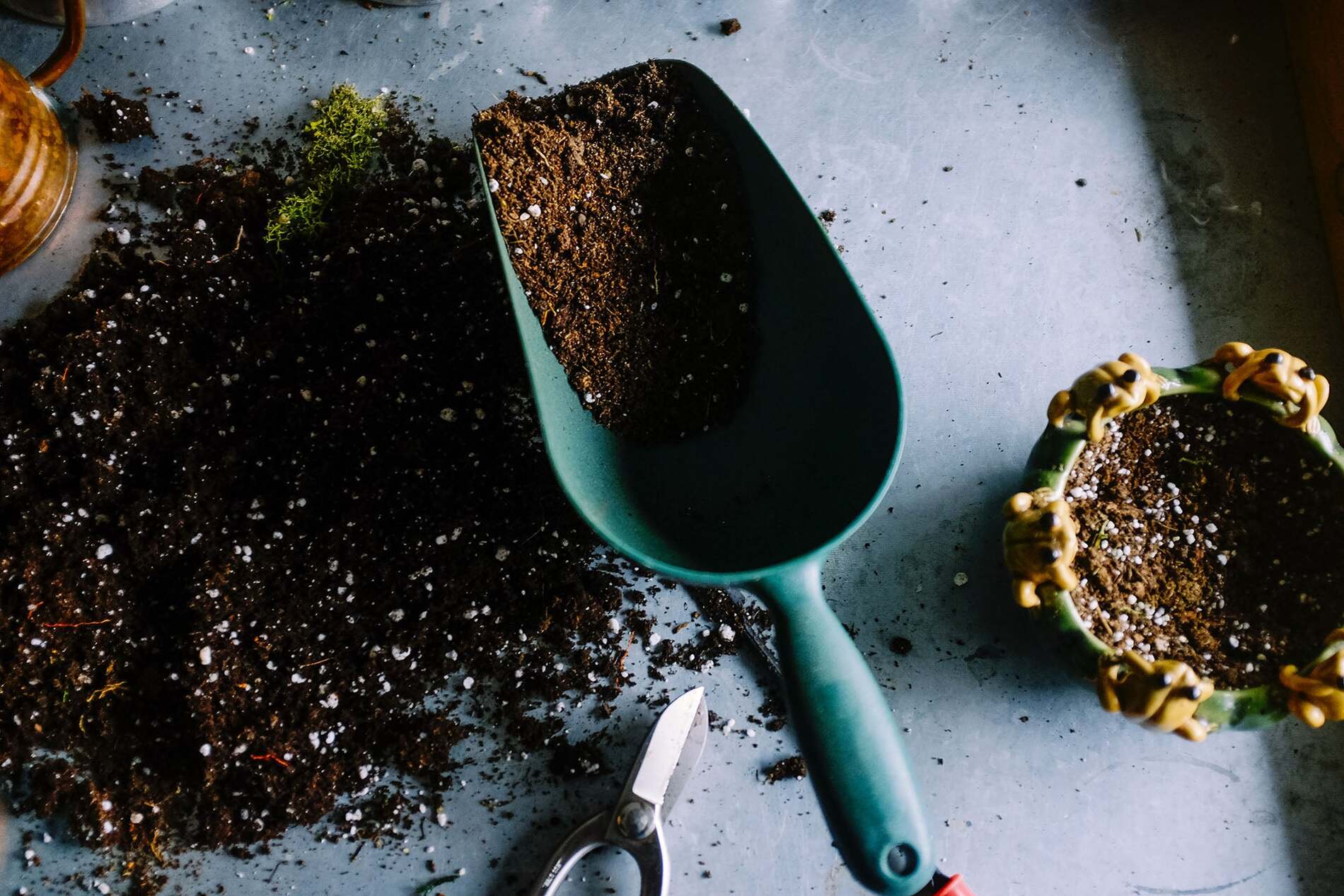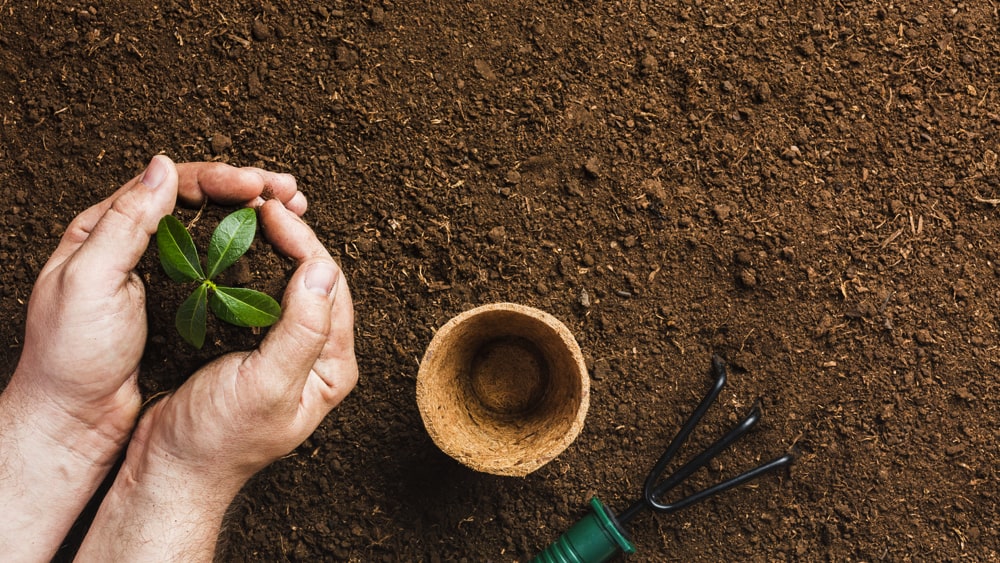Home>Gardening News and Trends>Latest News>What Is The Difference Between Agriculture And Horticulture?
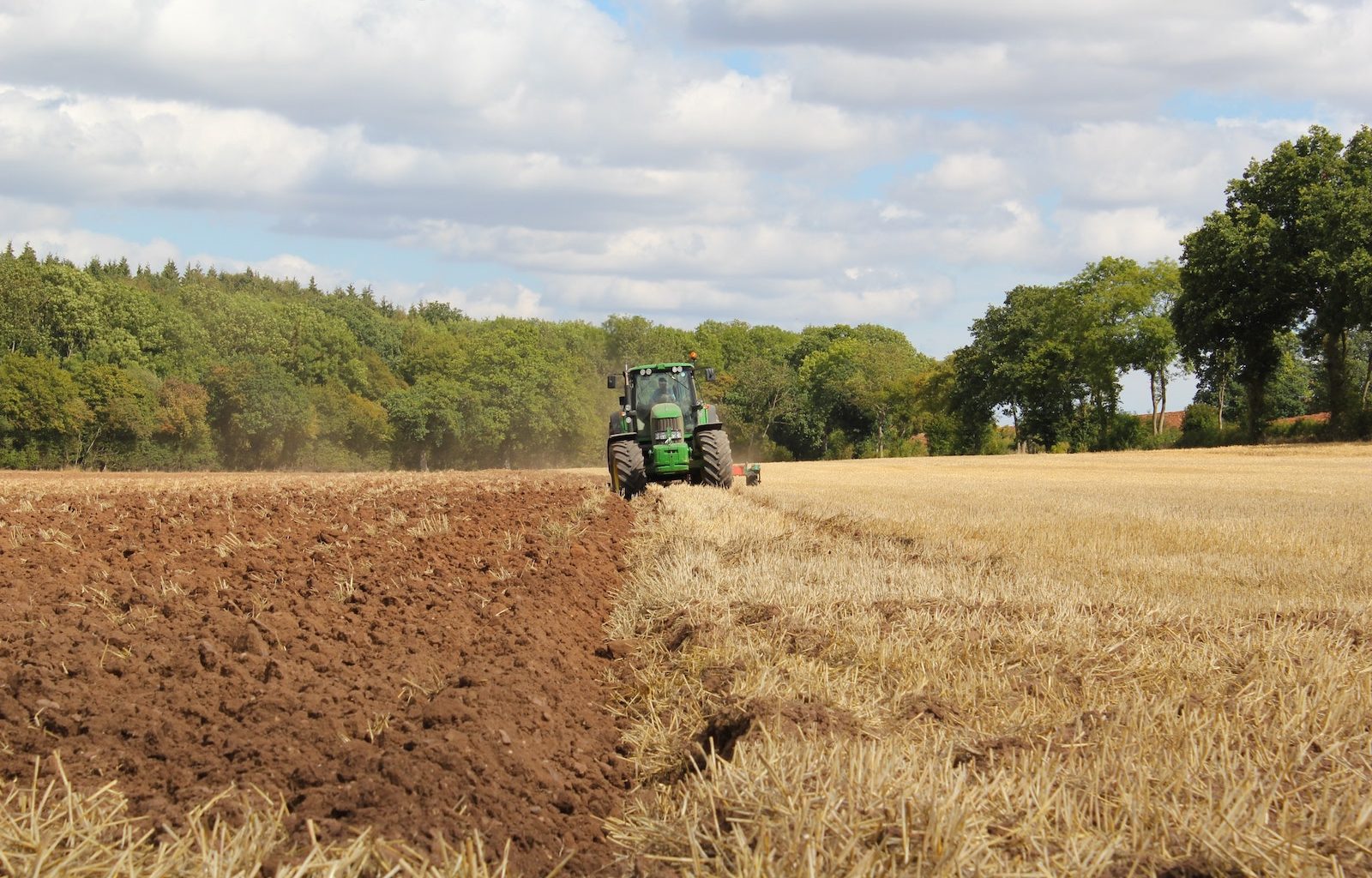

Latest News
What Is The Difference Between Agriculture And Horticulture?
Modified: January 22, 2024
Discover the key distinctions between agriculture and horticulture, along with their respective roles in food production and plant cultivation. Stay updated with the latest news on this topic.
(Many of the links in this article redirect to a specific reviewed product. Your purchase of these products through affiliate links helps to generate commission for Chicagolandgardening.com, at no extra cost. Learn more)
Table of Contents
- Introduction
- Definition of Agriculture
- Definition of Horticulture
- Comparison of Agriculture and Horticulture
- Focus of Agriculture
- Focus of Horticulture
- Techniques and Practices in Agriculture
- Techniques and Practices in Horticulture
- Scale of Operations in Agriculture
- Scale of Operations in Horticulture
- Main Crops and Plants in Agriculture
- Main Crops and Plants in Horticulture
- Careers in Agriculture
- Careers in Horticulture
- Conclusion
Introduction
Agriculture and horticulture are two closely related fields that play a fundamental role in human life. They both involve the cultivation and management of plants, but there are distinct differences between the two. Understanding these differences is essential for anyone interested in pursuing a career in either field or for those simply curious about the world of plant cultivation.
Agriculture can be defined as the science and practice of cultivating crops and rearing animals for food, fiber, medicinal plants, and other products used to sustain human life. It encompasses a wide range of activities, including soil preparation, planting, harvesting, and livestock management. Agriculture has been the backbone of human civilization since ancient times and continues to be a vital industry around the world.
Horticulture, on the other hand, is a branch of agriculture that focuses primarily on the cultivation of plants for ornamental purposes, landscaping, and the production of fruits, vegetables, and other high-value crops. It involves the art and science of growing and maintaining plants in gardens, nurseries, and greenhouses, with an emphasis on aesthetics, plant breeding, and product quality.
While agriculture and horticulture share similarities, such as the use of land and plant cultivation, there are several key differences that set them apart. This article will delve deeper into these differences, exploring the techniques and practices unique to each field, the scale of operations, the main crops and plants cultivated, and the career opportunities available.
Whether you have a personal interest in plants and farming or are considering a career in this industry, understanding the distinction between agriculture and horticulture will provide valuable insights and help you make informed decisions.
Definition of Agriculture
Agriculture is a broad term that encompasses the science, art, and practice of cultivating crops and rearing animals for various purposes, such as food, fiber, medicinal plants, and biofuels. It involves the entire process of growing plants and raising livestock, from soil preparation to harvesting and post-harvest processing.
The primary objective of agriculture is to produce an abundant and sustainable food supply to meet the needs of a growing population. It involves the utilization of natural resources, including land, water, and sunlight, along with the application of various techniques and technologies to maximize yields and ensure the overall well-being of the ecosystem.
At its core, agriculture is the backbone of human civilization and an essential industry that provides sustenance and economic stability. It has evolved significantly over time, with advancements in machinery, technology, and scientific understanding contributing to increased productivity and efficiency.
In modern agriculture, several sub-disciplines or sectors exist, including crop production, animal husbandry, aquaculture, agroforestry, and agricultural engineering. Each sector focuses on specific aspects of farming and requires specialized knowledge and skills.
Crop production is at the heart of agriculture and involves the cultivation of various plants for different purposes. This includes staple crops, such as grains (wheat, rice, maize), and specialty crops, such as fruits, vegetables, herbs, and spices. Crop production also involves the careful management of soil fertility, pest and disease control, and irrigation.
Animal husbandry, another key component of agriculture, involves the breeding, raising, and management of livestock for milk, meat, eggs, wool, and other animal-derived products. It includes dairy farming, poultry farming, pig farming, cattle ranching, and more. Animal husbandry focuses on maintaining the health and well-being of the animals while optimizing productivity and profitability.
Furthermore, agriculture encompasses agroforestry, which involves integrating tree cultivation with crop and livestock production to enhance sustainability and ecosystem services. Agroforestry practices include planting trees on farms to provide shade, windbreaks, erosion control, and additional sources of income from timber and non-timber forest products.
With the continuous advancement of technology and the growing recognition of the importance of sustainable practices, agriculture is constantly evolving. From precision farming and genetic engineering to organic farming and conservation agriculture, new approaches are being explored to improve productivity, reduce environmental impact, and adapt to the challenges posed by climate change.
The field of agriculture offers diverse opportunities for individuals interested in pursuing careers related to farming, research, agronomy, agricultural economics, agricultural engineering, and more. It is a vital industry that not only feeds us but also contributes to the overall development and well-being of society.
Definition of Horticulture
Horticulture can be defined as the science, art, and practice of cultivating plants for ornamental purposes, landscaping, and the production of fruits, vegetables, and other high-value crops. It involves the cultivation, propagation, and management of plants, with a focus on aesthetics, quality, and plant breeding.
Unlike agriculture, which encompasses a wide range of activities and crops, horticulture is a more specialized field that concentrates on specific plants and their specific uses. It deals with a diverse range of plants, including flowers, shrubs, trees, fruits, vegetables, culinary herbs, and medicinal herbs.
Horticulture is often associated with gardening and landscaping, as it involves the cultivation and arrangement of plants in residential and public spaces. It aims to enhance the beauty, functionality, and environmental sustainability of outdoor areas through the selection, placement, and maintenance of plants.
One of the primary objectives of horticulture is the production of fruits, vegetables, and ornamental plants with desirable qualities, such as taste, color, fragrance, and disease resistance. This requires expertise in plant breeding, propagation, and plant health management to ensure the desired traits are maintained and enhanced.
Within horticulture, several sub-disciplines exist, including pomology (fruit cultivation), olericulture (vegetable cultivation), floriculture (flower cultivation), nursery production (propagation of plants for sale), landscape design, and turf management. Each sub-discipline focuses on specific aspects of plant cultivation and requires specialized knowledge and skills.
Pomology, for example, is the branch of horticulture that deals with the cultivation of fruit-bearing plants. It involves selecting and breeding fruit trees to produce high-quality fruits and managing orchards for optimal growth and productivity.
Olericulture, on the other hand, focuses on the cultivation of vegetables, including leafy greens, root vegetables, and culinary herbs. It involves selecting and breeding vegetable cultivars, managing vegetable gardens, and implementing sustainable practices to ensure a bountiful harvest of nutritious and flavorful produce.
Floriculture is the sector of horticulture that deals with the cultivation of flowers and ornamental plants. It includes the production of cut flowers, potted plants, garden plants, and landscape plants. Floriculturists strive to create beautiful and visually appealing displays of flowers, both for personal enjoyment and commercial purposes.
Horticulture also plays a vital role in sustainable urban development. The planting of trees, shrubs, and green spaces in cities helps to improve air quality, reduce urban heat islands, and provide habitats for wildlife. This aspect of horticulture, known as urban horticulture, focuses on creating green and livable urban environments.
As with agriculture, horticulture offers various career opportunities for individuals passionate about plants and agriculture. Horticulturists can work as gardeners, landscape designers, nursery managers, crop consultants, plant breeders, and researchers. They play a crucial role in enhancing the beauty of our surroundings and providing us with nutritious food and quality plants.
Comparison of Agriculture and Horticulture
Agriculture and horticulture are two closely related fields of plant cultivation, yet they have distinct differences in their focus, techniques, scale of operations, and crop selection. Understanding these differences can help individuals choose the right path for their career or gain a deeper appreciation for the diverse world of plant agriculture.
One of the main distinctions between agriculture and horticulture lies in their primary objectives. Agriculture is primarily focused on the production of crops and raising animals for food, fiber, and other essential products. Its main goal is to feed and sustain a growing population. Horticulture, on the other hand, focuses on the cultivation of plants for ornamental purposes, landscaping, and the production of high-value crops such as fruits, vegetables, and flowers.
In terms of techniques and practices, agriculture typically involves large-scale operations and mechanized farming methods. It often utilizes extensive land areas, machinery, and advanced technologies to maximize productivity and efficiency. In contrast, horticulture often involves more labor-intensive practices and may rely on specialized techniques such as grafting, propagation, and pruning to achieve desired plant characteristics.
The scale of operations also differs between agriculture and horticulture. Agriculture tends to be associated with large farms and commercial enterprises that produce vast quantities of staple crops and livestock. The focus is on mass production and economies of scale. In contrast, horticulture is often practiced on smaller-scale farms or even in residential settings. It may involve smaller nurseries, gardens, or greenhouse operations that cater to specific plant species or niche markets.
When it comes to crop selection, agriculture is known for cultivating crops such as grains (wheat, rice, corn), oilseeds, and legumes on a large scale. These crops are typically grown for their nutritional value and are used to feed humans and animals. In horticulture, the emphasis is on growing high-value crops that are valued for their aesthetic appeal, taste, or uniqueness, including fruits, vegetables, flowers, and ornamental plants.
Furthermore, the level of specialization differs between agriculture and horticulture. In agriculture, farmers often focus on one or a few main crops or livestock species that are well-suited to the local climate and market demands. In horticulture, growers may specialize in specific plant types or categorize their production based on specific markets, such as organic farming, hydroponics, or floral arrangements.
Despite their differences, agriculture and horticulture are interconnected and mutually supportive. They both contribute to the overall sustainability and well-being of society by providing food, aesthetic enjoyment, and economic opportunities. Understanding the distinctions between these two fields allows for appreciation of the unique contributions each makes in the world of plant agriculture.
Focus of Agriculture
The primary focus of agriculture is the production of crops and the rearing of animals for food, fiber, and other essential products. Agriculture plays a critical role in feeding the growing global population and ensuring food security. It encompasses a wide range of activities, techniques, and practices aimed at maximizing yields, optimizing resource utilization, and maintaining the overall well-being of the ecosystem.
One of the key focuses of agriculture is crop production. Farmers cultivate various types of crops, including staple crops such as grains (wheat, rice, corn), oilseeds, and legumes, which are the foundation of our diets. The goal is to ensure a sustainable and reliable food supply by selecting crop varieties that are well-suited to the local climate and soil conditions.
Another significant focus of agriculture is animal husbandry. Livestock farming involves the rearing and management of animals for meat, milk, eggs, wool, and other animal-derived products. Farmers carefully breed, raise, and care for livestock to ensure animal health, efficient production, and humane practices. This aspect of agriculture plays a crucial role in providing a valuable source of protein and other essential nutrients.
Agriculture also focuses on sustainable land management and environmental stewardship. Farmers strive to protect and improve the quality of soil, water, and air by implementing conservation practices, such as crop rotation, cover cropping, and precision nutrient management. They aim to minimize the use of chemical inputs and reduce waste production to preserve the long-term productivity of agricultural lands.
An additional focus of agriculture is the application of advanced technologies and scientific research to enhance productivity and efficiency. Technological advancements in machinery, irrigation systems, crop genetics, and precision farming techniques have revolutionized the agricultural industry. Farmers utilize these tools and practices to optimize water and nutrient usage, monitor crop health, and minimize environmental impacts.
Economic viability is also a central focus of agriculture. Farmers need to make informed decisions about crop selection, market demand, input costs, and price fluctuations to ensure profitability. They may collaborate with agricultural economists, farm managers, and market analysts to make strategic decisions that align with market trends and economic realities.
In summary, the primary focus of agriculture is the production of crops and the rearing of animals for food, fiber, and other essential products. It involves careful management of resources, implementation of sustainable practices, and utilization of advanced technologies to maximize productivity and ensure food security for the growing global population.
Focus of Horticulture
Horticulture is a specialized branch of agriculture that focuses on the cultivation of plants for ornamental purposes, landscaping, and the production of high-value crops such as fruits, vegetables, and flowers. The primary focus of horticulture is to create beautiful and functional outdoor spaces while producing plants with desirable qualities such as aesthetics, taste, fragrance, and disease resistance.
One key focus of horticulture is ornamental plant cultivation. Horticulturists work with a variety of plants, including flowers, shrubs, and trees, to create visually appealing landscapes and gardens. They select and breed plants for their vibrant colors, unique forms, and pleasing fragrance, transforming outdoor spaces into beautiful and inviting environments.
Another significant focus of horticulture is the production of fruits and vegetables. Horticulturists employ specialized techniques and practices to maximize the quality and yield of crops such as apples, tomatoes, lettuce, strawberries, and many more. They utilize their knowledge of plant breeding, pest management, irrigation, and nutrient optimization to ensure the production of nutritious and flavorful crops.
Horticulture also encompasses the cultivation of culinary herbs and medicinal plants. These plants are valued for their flavors and health benefits. Horticulturists focus on growing herbs such as basil, thyme, and mint, which are commonly used in cooking, as well as medicinal plants like aloe vera, chamomile, and lavender, which have various healing properties.
Landscape design is another important focus of horticulture. Horticulturists work closely with landscape architects and designers to create outdoor spaces that are aesthetically pleasing, functional, and environmentally sustainable. They select and arrange plants in a way that enhances the beauty of the surroundings, provides shade and privacy, and attracts pollinators and wildlife.
Furthermore, horticulture places a strong emphasis on plant health and disease management. Horticulturists are skilled in identifying and treating plant diseases, pests, and disorders that can impact plant growth and health. They employ integrated pest management techniques, organic fertilization methods, and environmentally friendly practices to maintain plant vigor and ensure a sustainable and resilient garden or crop.
Horticulture also plays a crucial role in environmental conservation. Horticulturists work to preserve and restore biodiversity by selecting and growing native or regionally adapted plants. They create habitats for beneficial insects and birds, use water-efficient irrigation systems, and adopt sustainable practices to minimize environmental impact.
In summary, the focus of horticulture is the cultivation of plants for ornamental purposes, landscaping, and the production of high-value crops such as fruits, vegetables, and flowers. Horticulturists strive to create visually appealing and environmentally sustainable outdoor spaces while producing plants with desirable qualities, flavor profiles, and therapeutic properties.
Techniques and Practices in Agriculture
Agriculture employs a wide range of techniques and practices to maximize crop productivity, ensure the health of livestock, and promote sustainable land management. These techniques and practices have evolved over time, incorporating advancements in technology, scientific research, and an increased emphasis on environmental stewardship.
One of the primary techniques in agriculture is crop rotation. This practice involves planting different crops in a specific sequence on the same piece of land over multiple seasons. Crop rotation helps reduce the build-up of pests and diseases, improves soil fertility, and optimizes nutrient usage. By alternating crops with different nutrient requirements and growth patterns, farmers can maintain the long-term health and productivity of the land.
Farmers also utilize precision farming techniques to optimize resource utilization and minimize waste. Precision agriculture involves the use of advanced technologies, such as global positioning systems (GPS), remote sensing, and yield monitoring. These technologies enable farmers to precisely apply fertilizers, irrigation, and other inputs based on the specific needs of different areas within their fields. By adopting precision farming techniques, farmers can minimize the use of resources and increase the efficiency of their operations.
Irrigation is another vital practice in agriculture, especially in areas with limited rainfall. Various irrigation methods are employed, including flood irrigation, sprinkler irrigation, and drip irrigation. These techniques ensure that crops receive adequate water for optimal growth and development. Proper water management is crucial for crop productivity, as both water scarcity and excess water can have detrimental effects on plants.
Integrated pest management (IPM) is an essential practice in agriculture that aims to minimize the use of chemical pesticides while controlling pests in a sustainable manner. This approach involves monitoring pest populations, using biological controls such as beneficial insects or nematodes, employing cultural practices to create unfavorable conditions for pests, and only resorting to chemical pesticides when necessary. IPM helps farmers reduce environmental impacts, protect beneficial insects, and preserve biodiversity.
Crop fertilization is another key aspect of agricultural practices. Farmers apply fertilizers to replenish essential nutrients in the soil that are necessary for plant growth. Balanced fertilization, which involves applying nitrogen, phosphorus, potassium, and other micronutrients based on soil nutrient analysis, helps optimize crop yields, promote plant health, and prevent nutrient deficiencies.
Furthermore, farmers implement sustainable soil management practices to enhance soil health and prevent erosion. Conservation tillage methods, such as minimum tillage and no-till farming, minimize soil disturbance and help retain valuable organic matter. Cover cropping, where crops are grown specifically for soil protection and improvement, helps prevent erosion, suppress weeds, and add organic matter back into the soil.
Agriculture also involves the use of modern technology and machinery. Farmers use tractors, harvesters, and other specialized equipment to facilitate the various stages of crop production, from seeding and planting to harvesting and post-harvest processing. These mechanized practices increase efficiency, reduce labor requirements, and enable large-scale production.
In summary, agriculture employs a variety of techniques and practices to enhance crop productivity, ensure livestock health, and promote sustainable land management. These practices include crop rotation, precision farming, irrigation, integrated pest management, fertilization, sustainable soil management, and the use of modern technology and machinery. By implementing these techniques, farmers can optimize yields, conserve resources, and contribute to a more sustainable and resilient agricultural system.
Techniques and Practices in Horticulture
Horticulture employs a wide array of techniques and practices to cultivate plants for ornamental purposes, landscaping, and the production of high-value crops. These techniques, honed through years of experience and scientific research, are designed to optimize plant growth, enhance aesthetics, and promote sustainable gardening practices.
One of the fundamental practices in horticulture is propagation. Horticulturists utilize various propagation methods, including seed sowing, cutting, grafting, and tissue culture, to multiply plants and ensure genetic diversity. Propagation allows growers to create new plants with desirable traits, maintain plant collections, and produce large quantities of plants for sale or distribution.
Another key technique in horticulture is pruning. Pruning involves selectively trimming or removing plant parts to promote healthy growth, shape plants for aesthetic purposes, and manage plant size. Proper pruning techniques help improve air circulation, increase sunlight penetration, and stimulate new growth. Horticulturists prune trees, shrubs, and ornamental plants to maintain their form, enhance flowering, and manage disease or structural issues.
Plant nutrition is a crucial aspect of horticulture. Horticulturists ensure plants receive the necessary nutrients through proper fertilization practices. They analyze soil fertility, monitor nutrient levels, and apply fertilizers or organic amendments to provide plants with the necessary elements for growth. Balanced fertilization helps promote plant vigor, improve flowering and fruiting, and prevent nutrient deficiencies or toxicities.
Water management is essential in horticulture, and irrigation techniques are employed based on the specific requirements of different plants. Horticulturists adjust watering schedules, use watering systems such as drip irrigation or sprinklers, and monitor soil moisture levels to ensure plants receive adequate hydration. Watering practices are tailored to the specific needs of each plant, taking into account factors like plant type, stage of growth, and environmental conditions.
Soil management is crucial in horticulture to maintain healthy and fertile growing conditions. Horticulturists employ practices such as soil testing, soil amendment with organic matter, and proper soil drainage to ensure optimal root development and nutrient uptake. Well-draining soil and proper pH levels are vital in maintaining plant health and preventing issues like root rot or nutrient deficiencies.
In pest and disease management, horticulturists employ integrated pest management (IPM) strategies. This includes identifying pests and diseases, monitoring their populations, using biological controls, practicing good sanitation, and, if necessary, implementing targeted treatment using pesticides. By employing IPM, horticulturists can minimize pest damage while prioritizing the health of the plants and minimizing environmental impact.
Horticulturists also utilize methods to extend the growing season and protect plants from adverse weather conditions. They employ techniques such as the use of greenhouses, cold frames, and row covers to provide shelter, regulate temperature, and extend the growing season. These structures help plants thrive by creating a controlled environment and protecting them from frost, excessive heat, or strong winds.
Lastly, horticulturists implement sustainable gardening practices, such as composting, mulching, and responsible waste management. Composting organic materials not only provides valuable nutrients but also helps improve soil fertility and structure. Mulching conserves moisture, suppresses weeds, moderates soil temperature, and enhances overall plant health. By responsibly managing waste, horticulturists contribute to a more sustainable and environmentally friendly gardening system.
In summary, horticulture employs a range of techniques and practices to cultivate plants for various purposes. Propagation, pruning, plant nutrition, water management, soil management, pest and disease control, season extension methods, and sustainable gardening practices play a pivotal role in optimizing plant growth, enhancing aesthetics, and promoting sustainable horticultural practices.
Scale of Operations in Agriculture
The scale of operations in agriculture varies widely, ranging from small-scale subsistence farming to large commercial enterprises. It is determined by factors such as land availability, financial resources, market demand, and the specific crops or livestock being produced. Understanding the scale of operations is crucial for farmers to effectively manage their resources and optimize productivity.
Subsistence farming is characterized by small-scale agricultural activities carried out primarily to fulfill the food and basic needs of the farmer and their family. This type of farming is typically practiced in rural areas with limited access to markets and modern agricultural technologies. Subsistence farmers focus on cultivating a variety of crops for personal consumption and may also rear a small number of livestock to meet household needs.
Small-scale farming is slightly larger in scope and may involve the sale of surplus crops or livestock for additional income. Small-scale farmers often operate family-owned farms and rely on their labor and limited machinery. They may cultivate a range of crops, from staple foods to high-value specialty crops, and rear livestock for local markets or direct sales.
Medium-scale farming encompasses operations that are larger in size and more commercially oriented. Medium-scale farmers typically cultivate larger areas of land, use mechanization to a greater extent, and have access to better market opportunities. They may specialize in specific crop or livestock production, investing in higher-quality equipment and management practices to optimize yields and profitability.
Large-scale commercial farming represents the highest level of operation in agriculture. These large enterprises cultivate vast areas of land, often spanning multiple properties or regions. Large-scale farmers focus on high-volume production and typically specialize in staple crops, such as wheat, rice, corn, or soybeans, or livestock production on a significant scale. Commercial farms have greater access to capital, advanced machinery, and technology, allowing for efficient production and distribution to regional and global markets.
The scale of operations influences the level of mechanization and technology used in farming. Subsistence and small-scale farms may rely on manual labor or basic tools for farming activities. Medium-scale operations gradually introduce mechanization, using tractors and machinery for planting, harvesting, and other labor-intensive tasks. Large-scale farms employ advanced machinery, automated irrigation systems, precision agriculture techniques, and agricultural drones to optimize efficiency, reduce costs, and increase productivity.
Producers on a larger scale often have better access to markets, infrastructure, and resources, allowing them to negotiate and implement innovative business strategies. They may invest in value-added activities such as processing, packaging, and branding to increase profitability and expand market reach.
While large-scale commercial farming dominates in some regions, small and medium-scale farming remains prevalent in many parts of the world. In recent years, there has been a growing movement toward sustainable and diversified farming practices, promoting small-scale and family farming as a means of achieving food security, preserving traditional methods, and fostering local economic development.
In summary, agriculture encompasses a range of scales of operation, from subsistence to large-scale commercial farming. The scale of operations in agriculture determines the size of the farm, the level of mechanization and technology used, market access, and the ability to implement innovative strategies. Understanding the scale of operations is vital for farmers to plan and manage their resources effectively and optimize productivity in their specific agricultural context.
Scale of Operations in Horticulture
The scale of operations in horticulture can vary widely, ranging from small-scale home gardens to large commercial nurseries and greenhouse operations. The scale of horticultural operations is influenced by factors such as available land, market demand, financial resources, and the specific type of horticultural product being produced. Understanding the scale of operations is crucial for horticulturists to effectively plan and manage their resources for optimal productivity and profitability.
At the smallest scale, home gardens and community gardens are common forms of horticultural production. These small-scale operations are typically focused on personal consumption or local community needs rather than commercial purposes. Home gardeners may grow a variety of vegetables, herbs, and flowers in their backyard, patio, or balcony to supplement their food supply and beautify their surroundings.
Small-scale horticultural operations are slightly larger in scope and may involve selling surplus produce at local markets or directly to consumers. These operations are often family-owned and may include small nurseries or specialty crop production. Small-scale horticulturists may cultivate container plants, bedding plants, or specialty crops like heirloom tomatoes or gourmet herbs, catering to niche or local markets.
Medium-scale horticultural operations encompass larger enterprises that focus on supplying regional or wider markets. These operations may have access to more land and resources, allowing for increased production capacity. Medium-scale horticulturists may specialize in specific crops or plant categories, such as cut flowers, potted plants, or fruit tree nurseries. They often employ advanced cultivation techniques, such as controlled environment systems or high-density production methods, to optimize plant growth and increase efficiency.
Large-scale commercial horticulture represents the highest level of operation in the industry. These operations consist of extensive nurseries, greenhouse complexes, or specialized crop production facilities. Large-scale horticulturists have significant land holdings and employ advanced technology and automation to maximize productivity. They serve regional or national markets and may produce a wide range of horticultural products, including ornamental plants, fruits, vegetables, or cut flowers on a large scale. Large-scale operations may also include research and development departments focused on plant breeding and genetic improvement.
The scale of horticultural operations determines factors such as the level of mechanization, resource utilization, infrastructure requirements, and market reach. Smaller-scale horticulturists often rely on manual labor or basic tools for planting, maintenance, and harvesting activities. Medium-scale operations introduce more mechanization and technology, utilizing machinery, irrigation systems, and climate control methods. Large-scale commercial horticulturists employ advanced techniques such as hydroponics, automated irrigation systems, and artificial lighting in controlled environments to enhance crop growth and quality.
While large-scale commercial horticulture dominates in some sectors, small and medium-scale horticultural operations continue to play a significant role. Small-scale and specialty horticulturists often cater to local markets, restaurants, or niche customer segments who value locally sourced and unique products. There has been a growing interest in sustainable and organic horticulture, supporting smaller-scale and family-owned operations that prioritize environmental stewardship and consumer trust.
In summary, horticulture encompasses a range of scales of operation, from small-scale home gardens to large commercial enterprises. The scale of operations in horticulture influences the size of the production area, the level of mechanization and technology used, market access, and the ability to meet specific customer demands. Understanding the scale of operations is essential for horticulturists to effectively plan their resources and implement appropriate cultivation techniques to achieve optimal productivity and market success.
Main Crops and Plants in Agriculture
Agriculture encompasses a diverse range of crops and plants that serve as the foundation of our food supply, provide raw materials for various industries, and contribute to the overall economic well-being of societies around the world. The main crops and plants cultivated in agriculture vary depending on factors such as climate, soil conditions, market demand, and cultural preferences.
Staple crops are the most commonly cultivated crops in agriculture and serve as the foundation of the human diet. These crops are often high in calories and provide essential nutrients. Examples of staple crops include grains such as wheat, maize (corn), rice, and barley. These crops are used as the primary source of carbohydrates and are processed into various food products such as bread, pasta, and cereals.
Oilseeds play a vital role in agriculture, providing both edible oils and crops used as animal feed. Crops like soybeans, sunflower seeds, rapeseed (canola), and peanuts are grown for their oil-rich seeds, which are processed into cooking oils, margarine, and other food products. Additionally, oilseeds are a valuable source of protein for animal feed in livestock production.
Legumes are an essential crop group in agriculture due to their nitrogen-fixing properties and high protein content. Crops like beans, lentils, chickpeas, and peas are grown for their seeds, which are consumed as a protein-rich food or used in various processed products. Legumes also contribute to soil fertility by enriching the soil with nitrogen through their symbiotic relationship with nitrogen-fixing bacteria.
Fruits and vegetables are key components of agricultural production, providing essential nutrients and adding diversity to our diet. The range of fruits and vegetables grown in agriculture is extensive and encompasses a variety of types, including apples, oranges, bananas, tomatoes, cucumbers, lettuce, carrots, and bell peppers. These crops are cultivated for local consumption, regional markets, or global export, depending on the climate and market demand.
Livestock, including cattle, pigs, chickens, and sheep, are an integral part of agriculture, providing a valuable source of protein, dairy products, eggs, and wool. Livestock farming involves the rearing and management of animals for meat, milk, fiber, and other animal-derived products. Specific breeds and management practices depend on regional traditions, market demands, and environmental conditions.
In addition to these primary crops and livestock, specialized crops and plants are also cultivated in agriculture. These include medicinal plants, such as aloe vera, ginseng, and lavender, which are grown for their therapeutic properties. Fiber crops like cotton and hemp are important for the textile industry. Biofuel crops, such as sugarcane and corn for ethanol production, contribute to renewable energy sources. Additionally, niche crops like herbs, spices, and niche fruits are cultivated to fulfill specific market demands.
The selection and cultivation of these crops and plants in agriculture depend on various factors, including agro-climatic conditions, consumer preferences, market opportunities, and the economic viability of production. Farmers, agronomists, and agricultural researchers continually explore new crop varieties, hybrids, and improved cultivation techniques to meet changing market demands, enhance productivity, and address environmental challenges.
In summary, agriculture involves the cultivation of a diverse array of crops and plants that serve as the foundation of our diet, provide raw materials, and contribute to various industries. Staple crops, oilseeds, legumes, fruits, vegetables, and livestock are among the key crops and plants cultivated in agriculture. The selection of crops and plants is influenced by factors such as climate, soil conditions, market demand, and cultural preferences, driving the sustainability and profitability of agricultural systems.
Main Crops and Plants in Horticulture
Horticulture encompasses a wide range of crops and plants that are cultivated for ornamental purposes, landscaping, and the production of high-value crops. From beautiful flowers and lush greenery to delicious fruits and vegetables, horticulture offers a diverse array of plants that bring beauty and functionality to our outdoor spaces and contribute to our well-being.
Flowers are a prominent feature of horticulture. The cultivation of ornamental flowers adds beauty, color, and fragrance to gardens, parks, and landscapes. Popular ornamental flowers include roses, tulips, lilies, daisies, orchids, and sunflowers. These flowers are grown for their aesthetic appeal and are used for personal enjoyment, floral arrangements, and special occasions.
Foliage plants are also significant in horticulture. These plants are valued for their attractive leaves and can vary in size, shape, texture, and color. Examples of foliage plants include ferns, hostas, palms, and caladiums. Foliage plants are commonly used in landscaping and indoor gardening to create visually appealing displays and add texture and interest to the overall design.
Another important category in horticulture is fruit crops. Horticulturists cultivate a wide variety of fruits, including apples, oranges, bananas, berries, and citrus fruits, to satisfy our taste buds and provide vital nutrients. Fruit crops require careful cultivation, pruning, and management to ensure optimal yields, flavor, and quality.
Vegetable crops are also central to horticulture. Horticulturists grow a range of vegetables, including tomatoes, lettuce, carrots, cucumbers, peppers, and zucchinis. These crops provide essential nutrients and contribute to a healthy diet. Vegetable gardening allows individuals to enjoy freshly harvested produce and emphasizes the importance of sustainable and locally sourced food.
Horticulture also includes the cultivation of culinary herbs and spices. Herbs like basil, mint, thyme, and parsley are valued for their aromatic foliage and flavor-enhancing properties. These plants are commonly grown in herb gardens, container gardens, or as companion plants in vegetable gardens. Spices such as cinnamon, ginger, and turmeric offer distinct flavors and are often used in culinary preparations.
In addition to flowers, fruits, vegetables, and herbs, horticulture includes the cultivation of trees and shrubs. Deciduous trees like oak, maple, and birch provide shade, enhance landscapes, and contribute to the overall beauty of an area. Evergreen trees and shrubs like pine, spruce, holly, and boxwood offer year-round greenery and serve as privacy screens or windbreaks in gardens and landscapes.
Speciality crops are also cultivated in horticulture. These include certain niche crops, such as exotic fruits and vegetables, heirloom varieties, and unique plant species. Examples of specialty crops include dragon fruit, heirloom tomatoes, specialty peppers, and rare orchid species. These crops cater to specific market demands and offer distinctive flavors, appearances, or cultural significance.
Horticulture continually explores new crop varieties, hybrids, and improved cultivation techniques to meet changing market demands, improve plant health, and conserve resources. Growers, plant breeders, and horticultural researchers are at the forefront of developing new and improved cultivars, disease-resistant plants, and sustainable production practices to ensure the longevity and vibrancy of horticultural crops.
In summary, horticulture encompasses a wide variety of crops and plants, including ornamental flowers, foliage plants, fruit crops, vegetable crops, culinary herbs, trees, and shrubs. These plants contribute to the beauty of our landscapes, provide us with delicious and nutritious food, and offer opportunities for personal enjoyment and self-sufficiency. Horticulture provides an endless array of options for creating stunning gardens, lush landscapes, and sustainable, productive environments.
Careers in Agriculture
Agriculture offers a wide range of diverse and rewarding career opportunities for individuals passionate about plants, farming, and contributing to the sustainability of our food systems. From hands-on farming and animal husbandry to research, technology, and business management, there are numerous paths to pursue within the field of agriculture.
Farm management is a key career option in agriculture. Farm managers oversee the day-to-day operations of a farm, taking responsibility for cultivating crops, managing livestock, and ensuring efficient farm management practices. They coordinate planting and harvesting schedules, oversee labor management, monitor market prices, and make strategic decisions to optimize productivity and profitability.
Agronomists are professionals who specialize in crop production and soil management. They work closely with farmers to provide expertise and guidance on soil fertility, crop selection, irrigation practices, and pest management. Agronomists also conduct research to develop sustainable farming practices and improve crop performance.
Animal scientists focus on livestock production, including the breeding, nutrition, and health management of animals. They work to optimize livestock health, productivity, and welfare in areas such as dairy farming, poultry production, beef cattle ranching, and swine production. Animal scientists may also be involved in research and development related to breeding programs, genetics, and animal nutrition.
Agricultural engineers contribute to the development and implementation of technology within the agricultural sector. They design and improve machinery, irrigation systems, and farm infrastructure. Agricultural engineers play a vital role in enhancing the efficiency and sustainability of agricultural operations, ensuring the proper use of resources while minimizing environmental impact.
Agricultural economists analyze economic trends and market conditions to provide valuable insights into the financial aspects of agriculture. They assess market risks, evaluate farm viability, measure the impact of policies and regulations, and assist farmers and agribusinesses in making informed decisions. Agricultural economists support sustainable agricultural practices and the development of resilient and profitable farm enterprises.
Plant breeders and geneticists work to develop new plant varieties with improved traits such as disease resistance, increased yield potential, and enhanced nutritional value. They utilize techniques such as crossbreeding, genetic modification, and genomic research to select and create new cultivars. Plant breeders play a crucial role in improving crop resilience, nutritional value, and adaptability to changing environmental conditions.
There are also opportunities for careers in agricultural research and academia. Researchers focus on advancing knowledge and developing innovative solutions to challenges in agriculture. They conduct experiments, analyze data, and publish findings to contribute to scientific understanding and guide agricultural practices. Research extends across various disciplines, from plant physiology and crop management to animal health and environmental sustainability.
In addition to these roles, there are numerous other career options in agriculture, including agricultural journalism and communication, agricultural extension services, agricultural policy and advocacy, farm finance and risk management, precision agriculture and data analytics, sustainable agriculture consulting, and organic farming.
As the field of agriculture continues to evolve, there is a growing need for professionals who can navigate the complex challenges and contribute to sustainable and resilient food systems. Careers in agriculture offer the opportunity to make a positive impact on food security, rural development, environmental stewardship, and community well-being.
Whether working on the land, in research laboratories, in consultancies, or in policy and advocacy roles, those pursuing careers in agriculture find fulfillment in their work, connecting to nature, and contributing to the vital industry that sustains us all.
Careers in Horticulture
Horticulture offers a wide range of exciting and fulfilling career opportunities for individuals who have a passion for plants, beauty, and the environment. From working in gardens and nurseries to research, design, and management, there are numerous paths to pursue within the field of horticulture.
Gardening and landscape design are popular career options in horticulture. Gardeners and landscapers cultivate and maintain plants, create beautiful outdoor spaces, and enhance the aesthetic appeal of gardens, parks, and residential properties. These professionals have a deep understanding of plant care, design principles, and horticultural techniques to create visually stunning and functional landscapes.
Arborists are specialists in the care and maintenance of trees. They are responsible for tree pruning, disease diagnosis, and tree preservation practices. Arborists also provide consultation services for tree health and safety, working to enhance the urban environment and promote tree conservation.
Nursery managers and greenhouse operators play a vital role in horticulture, overseeing the production of plants for sale. They manage operations, including plant propagation, pest control, watering, and the overall health and quality of plants. Nursery managers ensure that the nursery or greenhouse operates efficiently, meets market demands, and provides customers with a wide variety of healthy and desirable plants.
Plant breeders and geneticists focus on developing new plant varieties with improved characteristics. They utilize breeding programs, genetic manipulation, and cutting-edge technologies to create plants with enhanced traits such as disease resistance, improved yield potential, or unique floral characteristics. Plant breeders contribute to the diversification and improvement of the plant species used in horticulture.
Landscape architects create functional and aesthetically pleasing outdoor spaces. They work with clients to design landscapes that meet their needs, incorporating elements such as plants, hardscapes, water features, and lighting. Landscape architects combine their knowledge of horticulture, design principles, and environmental sustainability to create beautiful and sustainable outdoor environments.
Greenhouse and nursery technicians assist with plant production by managing greenhouse environments, conducting plant care tasks, and monitoring crop health. They work alongside nursery managers and greenhouse operators to ensure the successful growth, maintenance, and distribution of plants to meet market demand.
There are also opportunities in horticultural research and academia. Horticultural researchers study plant physiology, disease management, plant nutrition, and other areas to advance knowledge and develop innovative solutions. They work in laboratories, greenhouses, and field settings to improve plant health, develop sustainable practices, and address emerging challenges in horticulture.
Horticultural therapists utilize plants and gardens as a therapeutic tool to improve the well-being and quality of life of individuals. They work in a wide range of settings, such as hospitals, rehabilitation centers, and community gardens, designing and implementing horticultural activities to promote physical, emotional, and mental health.
There are also careers in horticultural education and consultation. Horticultural educators teach in schools, colleges, and universities, providing instruction on topics such as plant biology, landscape design, and horticultural practices. Consultants offer expertise and advice to individuals, businesses, and organizations on garden design, plant selection, sustainability practices, and pest management.
In addition to these roles, careers in horticulture extend to areas such as botanical gardens, urban forestry, public horticulture, private landscaping firms, ecological restoration, and sustainable agriculture consulting.
Horticulture offers a rewarding and fulfilling career journey for those who have a love for plants, beauty, and the environment. It provides opportunities to connect with nature, contribute to sustainable practices, and make a positive impact on the world around us.
Conclusion
Agriculture and horticulture are fields that play essential roles in sustaining human life, ensuring food security, and enhancing our environment. While they share similar foundations in plant cultivation, there are distinct differences in their focuses, techniques, scales of operations, and crops produced.
Agriculture centers around the production of crops and livestock for food, fiber, and essential products. It involves large-scale operations, advanced technology, and a focus on maximizing productivity and efficiency. This field addresses the critical need to feed a growing population while managing resources sustainably.
Horticulture, on the other hand, is concerned with cultivating plants for ornamental purposes, landscaping, and the production of high-value crops. It encompasses a wide variety of plants, from flowers and foliage to fruits and vegetables. Horticulture emphasizes aesthetics, plant breeding, and quality, adding beauty and functionality to our environment.
Both agriculture and horticulture offer diverse and rewarding career opportunities. From farming and animal husbandry to research, technology, and business management, individuals passionate about plants and agriculture can explore various paths for personal and professional growth.
Working in agriculture, one can pursue roles such as farm management, agronomy, animal science, agricultural engineering, or agricultural economics. The field offers opportunities for those interested in the science and technology of crop production, animal management, land conservation, and economic analysis.
Similarly, careers in horticulture range from gardening, landscape design, and arboriculture to plant breeding, nursery management, and horticultural therapy. Professionals in horticulture contribute to the beauty of our surroundings, enhance outdoor spaces, and provide vital crops for consumption and decoration.
Both fields are continuously evolving, incorporating advancements in technology, sustainable practices, and scientific research. The pursuit of new crop varieties, improved cultivation techniques, and environmentally friendly approaches underscores the commitment of both agriculture and horticulture to address emerging challenges.
Ultimately, agriculture and horticulture have a profound impact on society, shaping the way we live and our relationship with the natural world. By understanding their distinctions and the opportunities they present, we can further appreciate the vital role these industries play in feeding us, beautifying our surroundings, and creating a more sustainable future.

